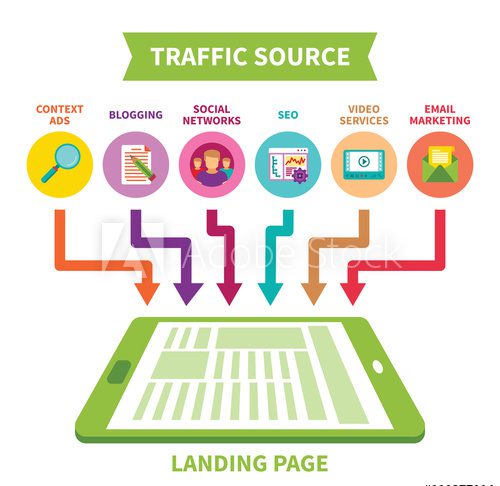Web analytics can be daunting at first. It takes some patience to learn, but they are the basis for whatever you do online to promote your business. It’s important to simplify it before getting into it. For instance, you a clothing brand. Everything is good, and you offer the best quality and unbeatable customer services. Besides that, you have to pay attention to your customers’ behaviors. Maybe they prefer to wear white in summers while they prefer hues of blue in colder weather. Or, perhaps they shop more on Saturdays or at the beginning of a month. Either way, paying attention to these subtle insights can contribute a lot to build your business.
Similarly, when you promote or sell products and services online, it works the same way. You have to pay attention to your users’ behaviors. Web analytics helps you to understand your users’ behavior as it is a measurement collection and analysis of data. It enables you to improve the effectiveness of the work you do online. It enhances your web presence in a productive way.
How does Web Analytics Help?
The next question that might immediately jump to your mind is “how.” How does web analytics improve the effectiveness of your work? It does because it helps answer the most basic questions about your visitors’ behaviors. For instance, what pages do they visit on your website? Where are they coming from, from social media or email marketing? Are they actually buying from you or getting distracted somewhere and leave the website? It can help you know whether the majority of traffic coming from social media, email, or Google Ads. So, we have so many options for tracking behaviors with web analytics.
Key Metrics of Web analytics
There are numerous things on a website that can be measured, gauged, and analyzed, but in this blog, we prefer to keep our focus on basics. So, here we are paying attention to the critical metrics for beginners. There are four key metrics that we should keep track of before anything else. These metrics include
- Total Traffic
- Source of Traffic
- Bounce Rate and
- Conversion Rate.
Keeping track of total traffic, source of traffic, bounce rate, and conversion rate can help business owners streamline their digital marketing strategy and, ultimately, increase sales.
Total Traffic
Total traffic is clearly understood with its name. It’s the total number of people who visit your website in a given amount of time. Your total traffic can be a strong indication of your website performance. It indicates the overall health of your website and what you are doing right to improve health.
Some factors are not in your control, but there are things that you can do to boost your website traffic. For instance, you can write a blog to amplify the traffic to your website. If you get a big difference in traffic after publishing a guest post as a contributor to other websites, you know you did the right job. If it didn’t work for you and you don’t see a difference in total traffic, you must have been making a mistake somewhere. Maybe you did not target the right website or wrote on irrelevant topics. Or, maybe the content is not up to the mark. So, when you are able to learn about the total traffic of the website, it is easier for you to analyze your performance.
Source of Traffic
This metric is quite self-explanatory by its name. Source of traffic enables you to learn about how people are finding your website online. Let us make it more simple by comparing it to the example of a clothing store. A customer can reach your store by car, bike, or walk. Ss coming from social media, you can use that knowledge to boost that traffic on Facebook, Instagram, Twitter, or wherever your traffic is coming from. it by similarly, customers can arrive on a website through social media, blogs, Google searches, email, and more. This measurement tells you how This can help you create a strategy for going forward. If you come to know that most of your recent visitors are coming from your social media posts, you will recognize that you should put more effort into making similar posts that entice traffic.

Bounce Rate
The bounce rate is the third important metric in web analysis. A bounce is when a visitor leaves a website before clicking on any other page. A bounce rate can be understood by imagining a customer who comes into your shop and, takes a glance and looks around, and walks away without looking at your products or buying something. All of us have done this while searching for a perfect dress. So, we as customers do this online too.
When a customer comes to a website and leaves without clicking on other options, it is counted as a bounce. And, the higher the bounce rate is, the worse your site’s performance is. Because a high bounce rate suggests that the people are coming to your website, but they are not sticking around to make a purchase. For instance, if your website’s bounce rate is 80 percent, it means that eight out of every ten people don’t like to stay on. And this is not good for a website’s performance.
However, your job is to work on learning why it is happening. There can be various reasons, including irrelevant content, confusing navigation, unattractive website design, annoying sound of images, or unappealing menu. Ideally, aim for a bounce rate that is lower than 50% but do everything possible to make it as low as possible. The lower the bounce rate, the better your website’s performance is.
Conversion Rate
When it comes to conversion, it is counted as any call of action that a customer completes that fulfills one of the purposes of your website. In a clothing store, a conversion would actually be buying a dress. Similarly, for a website, a conversion could be signing up for a newsletter or purchasing a product. The conversion rate is the percentage of traffic who completes a call of action. And, the higher your website’s conversion rate is, the better off it is, whereas a low conversion rate indicates that your website content and call to action are weak. The bounce rate and conversion rate are two great insights into how your website is doing.
How to Track your Website Analytics?
Tracking web analytics requires your time and effort, but reading the data carefully and improving your performance can lead to a better and more effective website and, eventually, more sales. In short, web analytics is the secret to a successful website.
So, how do you keep track of these metrics? There is a variety of web analytics tools that you can use to tack on these insights. The most popular and reliable platform is Google Analytics. All you need to do is to visit Google Analytics. It’s free and easy to set up and navigate. More so, it can help you get insights on your website and improve it. However, all of this starts with a great-looking website. you can earn really well with a good website. If you are looking ahead to get a functional website, get in touch with AppVerticals and start moving towards accomplishing your goals.








